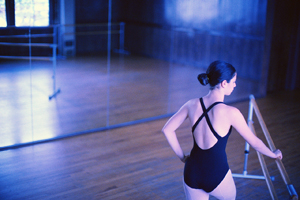-

Apex Black Steel 05 PS - DIY Solar Window Film
$38.40 - $1,920.00 -

Apex Black Steel 15 PS - DIY Solar Window Film
$38.40 - $1,920.00 -

Apex Black Steel 30 PS - DIY Solar Window Film
$38.40 - $1,920.00 -

Apex Black Steel 40 PS - DIY Solar Window Film
$38.40 - $1,920.00 -

Opaque - Black-Out 47" Glossy-Flat
$32.80 - $820.00 -

Opaque - Black-Out 60" Glossy-Glossy
$41.00 - $1,025.00
One-Way / Two-Way Mirrors
Do-It-Yourself Mirror Effects
The "Observation Glass" Effect
Do-It-Yourselfers seeking a one-way mirror effect (sometimes called two-way mirror or observation glass) should be aware that light conditions are an important factor in achieving this result. The 'observer' side of the glass must be darker than the side of the glass that is being observed, otherwise you will be able to see back in. Think about mirrored glass buildings. In the daytime you can't see in only exterior reflections are visible. However, at night when interior lights are on you can see right in.
For best results, the side of the glass which you want to be able to see should be very brightly lit, while the 'hidden' side of the room should be totally dark.
To achieve a mirrored effect, you will require a reflective window film. Apex carries reflective window films from our solar control line up in Silver, Bronze and Black Steel finishes. Scroll Down to view our top picks for creating mirror effects.
 DIY TIP for Interior Glass:
DIY TIP for Interior Glass:
Adding a darkening layer of Apex VLT 20 film (see below) beneath the reflective film can enhance the one-way mirror effect, allowing a certain amount of diffuse lighting on the observation side, HOWEVER, this additional layer may only be used for interior glass. This film can be applied before the reflective layer, or on the opposite side of the glass.
NB: Apex VLT20 is not designed for flat glass application on exterior doors and windows and should NEVER BE APPLIED TO EXTERIOR WINDOWS OR DOORS as it may cause them to break.
 Create a Mirror from Regular Flat Glass
Create a Mirror from Regular Flat Glass
To convert regular interior glass to a mirror, you will require two layers of film. We recommend our most reflective window film, Apex Supreme Silver 20 (see below) for this application. Below this reflective layer, or on the opposite side of the glass, apply Apex Black-Out Window Film (see below). It is important to note that you will not be able to see through this mirror from either side of the glass. This effect should not be used on exterior glass as the absorptive nature of the black-out film could cause glass stress and fracturing.

